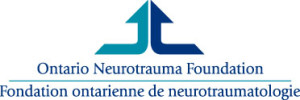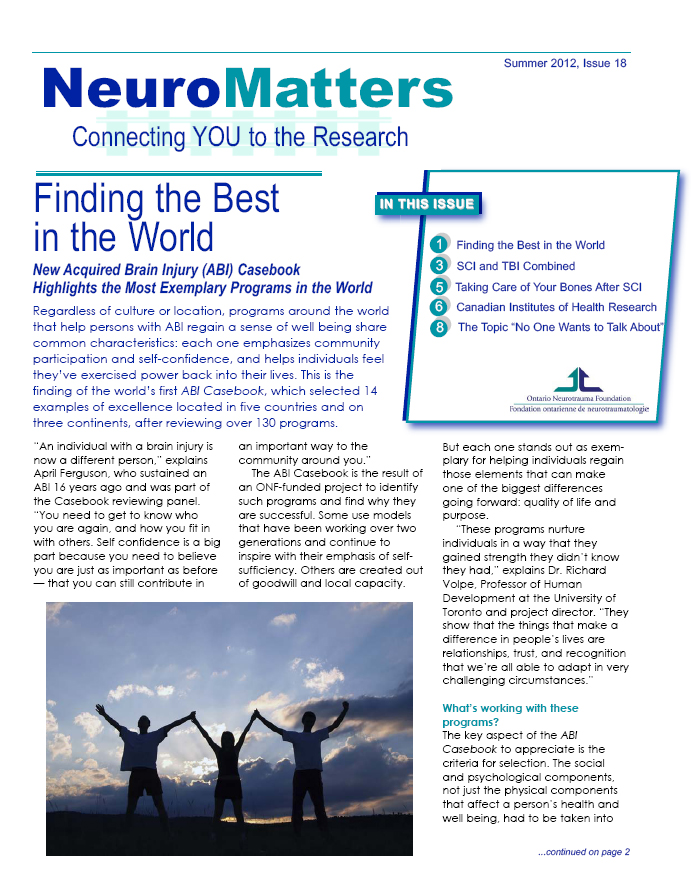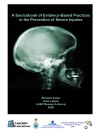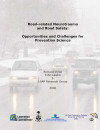

Read about the Casebook of Exemplary Evidence-Informed Programs that Foster Community Participation After Acquired Brain Injury in the Summer 2012 Edition of ONF’s newsletter: Neuromatters
The Best Practice Reviews research is funded by the Ontario Neurotrauma Foundation
The collection of Best Practices involves a systematic review process that supports the ONF’s strategic funding and knowledge mobilization initiatives. The methodology for these projects includes an in-depth look at current literature in the specific subject areas, with a focus on identifying effective programmatic interventions. Comprehensive sets of criteria are applied to selected programs, ultimately identifying those that meet the benchmarks of an evidence-informed best practice. The Program’s key personnel (for example, the executive director or programming director) take on the role of key Informant by assisting the researcher to write the case study—revealing the program in terms of its Background, Resources, Implementation, and Outcome (BRIO Model), and using the Life Space Case Analysis Framework to help tell a detailed story. This approach to qualitative research has expanded over the years to include criteria such as program sustainability and identifying specific communities of practice (COPs) intended to help advance policy decisions. The programs showcased in the following reviews are made available as exemplars of initiatives for implementation in the Ontario/Canadian context.
2014 (In Progress) Best Practices in the Prevention of Adult Falls in Everyday Activities
Falls are one of the most serious health problems across the life span. Although falls substantially impact all age groups, children and older adults are most vulnerable to the consequences of falling. For this reason, falls prevention research tends to focus on these life stages, with less attention on young and middle-aged adults (25-64). The research that does exist on falls in mid-life typically examines falls-related injuries in the workplace and in competitive sports, with little consideration given to falls in young and middle-aged adults who are going about their everyday activities. This new project hopes to fill the knowledge gap pertaining to the circumstances in which falls in adults occur and how these falls are different, similar to, or a predictor of falls in older adults (65+). Knowledge gained will be instrumental in thinking upstream in terms of preventing falls in older adults, as well improving the health, environment and other conditions necessary to influence safety later in life. An additional aspect of this project is the participation of program implementers, policy makers and other key stakeholders to support the identification of evidence-informed interventions on adult falls prevention. This process will also provide valuable information to enhance the use of these interventions for eventual implementation.
 2012 Review of Best Practices in Programs that Foster Community Participation for Survivors of Acquired Brain Injury
2012 Review of Best Practices in Programs that Foster Community Participation for Survivors of Acquired Brain Injury
Acquired brain injury (ABI) describes damage to the brain that occurs after birth, caused by traumatic injury such as an accident or fall, or by non-traumatic cause such as substance abuse, stroke, or disease. Today’s medical techniques are improving the survival rate for people of all ages diagnosed with ABI, and current trends in rehabilitation are supporting these individuals returning to live, attend school, and work in their communities. Yet strategies on the exemplary ways of fostering community participation vary among rehabilitation experts. Because many of these individuals do not and will not return to the status quo of their former lives it is important to examine what constitutes exemplary and promising practices in this area. With this review, we examined existing programmatic efforts that combine emphasis on the individual, the social, and the service systems in a way that captures community participation as a complex process of interactive change in the person–environment relationship, i.e., programs that do not divorce ABI survivors from their contexts, and where participation efforts facilitate positive change in the social and political context. Fourteen such programs were identified and showcased in this compendium.
2010 Best Practices in the Prevention of Falls in Healthcare Facilities
Healthcare facilities are increasingly approaching the problem of injury in their sector with the need to build a culture of safety, where priority is placed on the health and safety of everyone in these settings – patients, staff, and the general public. This priority is evident in a shared attitude that places safety at the core of all activities and decisions, and where each person at every level in the organization takes personal responsibility for their own safety as well as that of others.
Falls are the second leading cause of death and the third leading cause of disability throughout the world. In North America, slip, trip and fall injuries are the primary cause of patient injury hospital incidents. The rate of falls is even higher for older people in residential aged care and hospital settings. Healthcare is a high hazard industry. Falls account for the largest portion of lost-time injuries for healthcare workers. In Canada, falls are second only to violence and aggression as a source of workplace injury. This situation has negative implications for the retention and recruitment of healthcare workers. And because healthcare facilities are open, public institutions, visitors are also at risk for falling in these settings. The consolidation of best practices in the prevention of falls in healthcare facilities will help establish the connections necessary in building a culture of safety and bring together resources that increase the impact of falls prevention initiatives. This casebook showcases the Bayside Health Falls Prevention Project; Children’s Hospital Central California Pediatric Fall Prevention Program; UCSF Children’s Hospital Pediatric Falls Program; VHA National Falls Collaborative and Prevention Programs; Victorian Nurses Back Injury Prevention Project; WellAware Program/BJC Healthcare; West Virginia Medical Institute’s Falls Prevention program: Rootcause Analysis and the Reduction of Falls; The Melbourne Extended Care and Rehabilitation Service.
 2009 Play It Cool: BRIO Case Study
2009 Play It Cool: BRIO Case Study
Ice hockey is deeply rooted in Canadian culture; over 500,000 youth register annually with minor hockey leagues, while many more enthusiasts tie up the skates for informal “pick-up” games throughout the Canadian winter season. Regrettably, ice hockey has the highest reported number of injuries of team sports in Canada, a statistic particularly troubling as many players are children and youth still in the developmental stages of growth. This case study evaluation reviews a Canadian-designed safe hockey injury prevention program entitled Play It Cool. The program’s goal is to reduce concussion and spinal cord injury through skill enhancement and education and involves a comprehensive strategy that includes coaches, players, parents and the community.
2009 Best Practices in the Prevention of Reinjury
The tremendous need to effectively prevent re-injury in workplaces, communities, hospitals, prisons, and sports make it an important area for programming and policy. And since injury itself may predispose to re-injury, good practice is often associated with the prevention of re-injury. Consequently, this review extends beyond the primary prevention of severe injury to include secondary and tertiary prevention of moderate injuries. In this study, re-injury prevention refers to efforts aimed to reduce the likelihood of an injury happening again, as well as to interventions that attempt to reduce permanent damage that may lead to further injury. Risk factors for re-injury include the nature and severity of initial injury, time since injury, intentionality, age, marital status, substance use, fatigue, strength, flexibility, balance, and mental health. This unique casebook showcases ImPACT™: The Best Approach to Concussion Management; The Otago Exercise Programme: a home-based individually tailored strength and balance retraining programme; Southwark and Lambeth Integrated Care Pathway for the Prevention Of Falls (Slips); Reducing Reinjury From Falls Among Senior Hip Fracture Patients In Swedish Hospitals; VIP: Violence Intervention Program; Assaulted Staff Action Program (ASAP): A workplace violence prevention program; the Boston Gun Project: OPERATION CEASEFIRE; Alcohol Screening and Brief Intervention (Sbi) at Harborview Trauma Center.
2008 Best Practices in the Prevention of Severe Injury in Sport and Recreation Activities
Severe head and spinal cord injuries in sport and recreation activities are a major public health concern. Neurotrauma often results in long-term disability that impedes educational, occupational, and personal fulfillment. Associated personal and social burdens are extended because sports injuries most frequently occur among children and young adults. These problems are compounded by the fact that athletes are at risk for multiple injuries. This report presents the case study outcome of a project that set out to review evidence for the prevention of severe injuries in sports and recreation activities. Programs include: 4-H Community ATV Safety Program; Bike Safety and Awareness Program; British Horse Society Riding & Road Safety Test; Heads Up: Concussion in High School Sports; It Ain’t Brain Surgery (snowboarders & skiiers); RugbySmart; SafeClub (soccer); and Sudden Impact (diving).
2007 Science and Sustainability in the Prevention of Neurotrauma
This 5th compendium is aimed at extending and refining criteria used in earlier volumes, focusing on the analysis of evidence for program sustainability and the usefulness of making explicit general principles of prevention science. The concept of sustainability refers to the continuation of programs. A sustained program is defined as a set of durable activities and resources aimed at program-related objectives. In this context, sustainability is viewed as the continuation of a best practice after an initial funding-period has ended. To date, research on sustainability suggests that programs are likely to be sustained if they are high-quality, have evaluated and documented success, strong administrative support, community ownership, and meet funding priorities. Sustainability must be considered from the start and revisited throughout an intervention to ensure that even an effective program has a long life.
Prevention is a proactive process, which empowers individuals and systems to meet life’s challenges by creating conditions that promoting personal strengths and resiliency and supporting social structural changes that reinforce positive life-supporting processes. It includes individual- and community-based activities, personal, environmental, and policy change initiatives that can be targeted or universal. Increasingly, there is recognition that these activities should be based on, and in some way contribute to, evidenced-based practice. However, no one as yet has looked across best practices in an effort to understand and systematize their contribution to prevention science. Programs include: Kids Can’t Fly; Alaska Focus on Safety; Vision Zero; Nurse-Family Partnership; ThinkFirst; A Million Messages; MOREOB– Managing Obstetric Risk Efficiently; and New Zealand Injury Prevention Strategy.
 2006 A Sourcebook of Evidence-Based Practices in the Prevention of Severe Injuries
2006 A Sourcebook of Evidence-Based Practices in the Prevention of Severe Injuries
The prevention of both injury and disease requires the systematic use of evidenced-based practices; injury prevention, however, must be handled differently than disease prevention—populations at risk cannot simply be inoculated against injury, nor does the mere existence of evidence provide a recipe for successful injury prevention. Rather, evidence in injury prevention enables practitioners to frame their decisions and actions using a knowledge base that increases the likelihood of effective practices being implemented. Evidence-based practice in prevention science entails integrating the best available research with prevention expertise within a context of population characteristics, interpersonal relations, social structures, social determinants, cultural practices, personal preferences, beliefs, and choices; its purpose is to promote effective prevention practice and enhance public health by applying empirically supported principles to the implementation and evaluation of prevention practices. Understanding the nature of evidence involves recognizing the importance of hierarchies of evidence and establishing criteria for its selection, assessment, and prioritization. The cases outlined in this review include: Fall Safe Intervention (construction industry); National Program for Playground Safety: A Comprehensive Model & the National Action Plan for the Prevention of Playground Injuries; UCLA Parent-Child Health and Wellness Program; EMS Traumatic Brain Injury Program; MECRS (Melbourne Extended Care & Rehabilitation Service) Falls Prevention Project.
 2006 Road-related Neurotrauma and Road Safety: Opportunities and Challenges for Prevention Science
2006 Road-related Neurotrauma and Road Safety: Opportunities and Challenges for Prevention Science
According to the Ontario Road Safety Annual Report (2002), Ontario has the safest roads in Canada. Moreover, it has consistently ranked among the top three jurisdictions in North America as a leader in road safety policies and implementation practices in the world. In spite of this impressive record, the need to improve road safety is constant because of the hazards associated with motor vehicle traffic and the seriousness of injuries resulting from collisions. This project aims to provide an evidence base to aid the Ontario Neurotrauma Foundation’s Prevention Committee in advising ONF on the funding of projects and programs that will prevent road-related neurotrauma and support the development of policies for planning road safety in Ontario. This is achieved in the form of a comprehensive literature review and the provision of examples of effective practice. To date there has not been a comprehensive critical review of efforts towards prevention of road-related neurotrauma, nor has there been an examination of effective evidenced-based programs in this area. Our intention here is to provide such a review. Programs reviewed include: Active & Safe Routes to School; Graduated Driver Licensing-California Program; Alberta Interlock Program; Florida’s Elder Roadway User Program; DriveABLE Assessment Centers Inc; COMPASS Program; Black Spot Programs, Australia.
2004 Preventing Neurotrauma: A Casebook of Evidence-Based Practices
The programs reviewed in this compendium illustrate that effective injury prevention strategies are designed to bring about change. A systems-oriented approach to prevention assumes that efforts to reduce injury involve interventions that change settings, situations, and the way that people think and behave. The following programs were reviewed: Stay on Your Feet (see Implementation & Evaluation Projects page for in-depth description of the program’s uptake in Ontario); Safe Waitakere Community Injury Prevention Project; Indian Health Services Injury Prevention Program/US Department of Health & Human Services; External Vehicle Speed Control/Intelligent Speed Adaptation; UCLA-Labor Occupational Safety Program-Youth Project; Community Partners for Healthy Farming Project/The Kentucky ROPS Project; Upstate New York Shaken Baby Syndrome (SBS) Education Program (see Implementation & Evaluation Research page for an in-depth description of the program’s up-take in Ontario).
2002 A Compendium of Effective, Evidence-Based Best Practices in the Prevention of Neurotrauma
This project aimed to: (1) survey the range of neurotrauma prevention strategies and programs; (2) identify examples of effective, evidence-based practice; (3) describe, analyze, and evaluate these in terms of their effectiveness for diverse age groups; (4) develop and strengthen networks by mobilizing public support and encouraging the participation of stakeholders, (5) provide a Compendium of exemplary, evidence-based neurotrauma prevention efforts; and (6) create an electronic means of distributing the Compendium, resource documents, and a directory of contacts in this field. More than 25 injury-prevention programs are profiled as either best practices or promising practices in the areas of Asphyxiation; Motor vehicle and road safety; Sports, playground and recreation; Farm/occupation; Falls; and Comprehensive community-based interventions.